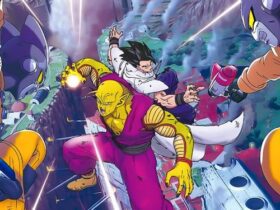Necromancers are one of the most sinister characters in Dungeons & Dragons, yet a talented roleplayer may make one into a solidly credible hero if they so desire.
In Dungeons & Dragons, necromancy is normally used by villains, but with some clever planning, a heroic necromancer may also be possible.
It can be a bit of a difficulty to frame necromancy as heroic under regular circumstances owing to the magic’s nature. However, in Dungeons & Dragons, practically all abilities may be employed for good or evil.
In Dungeons & Dragons there are several other uses for necromancy besides simply reviving the dead.
It also entails using negative energy to physically and emotionally weaken or damage live enemies.
Of course, since the effects of good and negative energy are inverted for the undead, it can also benefit them.
Necromancy contains some of the most potent, game-changing spells, making a necromancer an excellent pick for a member of the party.
It could be possible to see necromancy in a less ominous way if the necromancer has a strong connection to nature and the supernatural in some way.
They could resemble a powerful monk from Dungeons & Dragons, having developed a strong bond with spirits via a life of meditation.
Their version of necromancy entails cooperating with the powers of life and death rather than manipulating nature for their personal gain.
This kind of necromancer may be described as one who communicates with the spirits of the deceased and asks for their help or even consent to use their remains.
Such a necromancer can be a more introspective individual who is acutely aware of the harmony of nature and their place within it.
A necromancer may get magic from an outside source, much as how a warlock in Dungeons & Dragons receives their powers from their chosen patron.
They may call upon this power using their dormant skills, or maybe this creature is the only wielder of their ability and responds to their commands.
Giving the connection between the necromancer and the dead a representative person would be a method to elevate it to a new level.
Although it would be a unique approach to the class, it has the potential to be intriguing to explore while roleplaying as one.
A ghost connected to the necromancer’s past such as an ancestor or a deceased friend or family member, may go with them.
Whenever they utilize their spells, their power is supplied by such a spirit that willingly uses their ghostly skills to help.
This necromancer’s design would, in a way, give the player control over both the necromancer and their partner spirit at the same time.
Depending on the situation, it might be possible to experiment further with this dynamic.
They might have acquired their abilities accidentally, or they might be afraid of necromancy because it represents the most deadly aspect of the usually evil magic.
Whatever the situation, this character would actively avoid using magic unless it was absolutely necessary and actively fear their own abilities.
To further develop the character, the player could elaborate on the cause of their fears.
It might be as straightforward as them being afraid of the dead, or it might be more complicated like them feeling like their abilities shouldn’t even exist.
By turning their weakness into a strength, the player may create a compelling hero.
Despite the fact that their abilities may horrify them they nonetheless learn to control them in order to complete the mission at hand, especially if it serves the greater good.
Overall, it’s safe to say that players can use some really creative approaches to challenge common misconceptions about necromancers if they wish to portray them in a positive light as heroes.















Leave a Reply